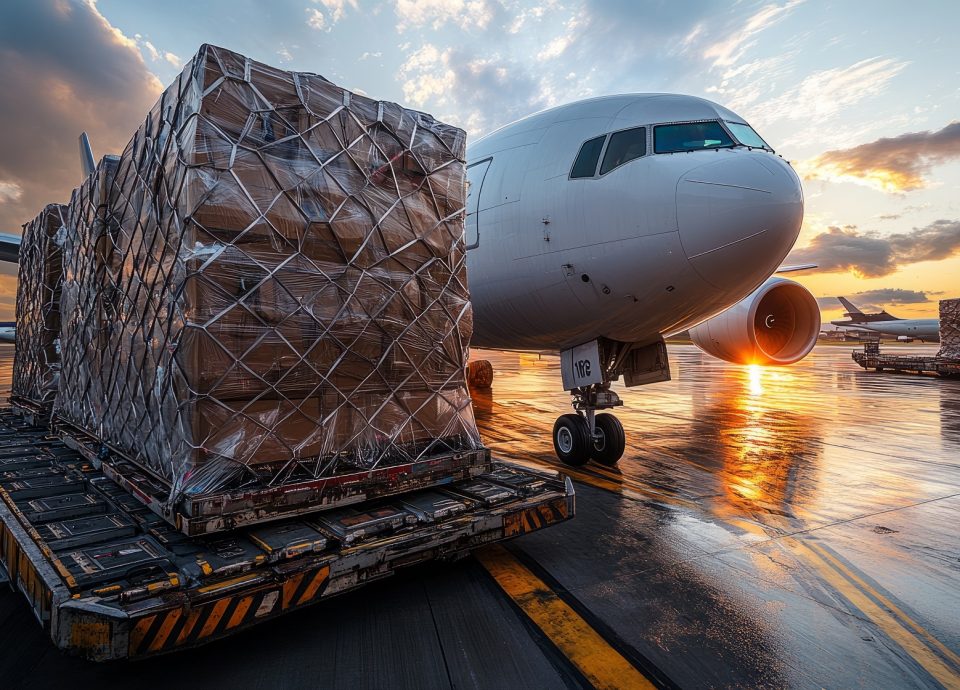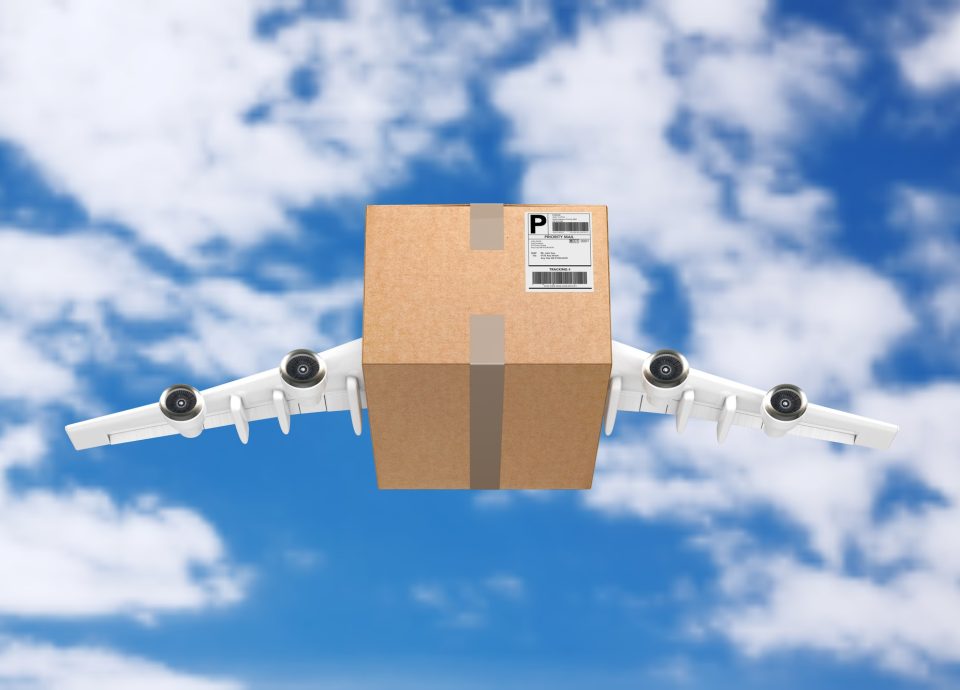In the complex world of global logistics, timing, cost, and cargo type determine everything. Choosing between air, sea, and road transport can significantly impact your supply chain, especially when urgent timelines or high-value cargo are involved. That’s why understanding air vs sea shipping is critical for any business involved in national or international trade.
At Sprinter Air, we specialize in fast, secure air freight services that empower businesses to meet delivery deadlines, avoid costly delays, and stay ahead of the competition. In this guide, we’ll walk you through when and why to choose air freight over sea or road transport—with real-world insights, industry comparisons, and expert recommendations to support informed decisions.
Understanding the Core Differences: Air vs Sea Shipping vs Road Transport
What Is Air Freight?
Air freight refers to the movement of goods via aircraft—either on dedicated cargo planes or as belly cargo in passenger flights. It’s ideal for:
- Time-sensitive deliveries
- High-value cargo
- Perishable goods
- Long-distance shipping
What Is Sea Freight?
Sea freight involves the transport of goods in containers via cargo ships. It’s best for:
- Large, bulky shipments
- Non-urgent deliveries
- Cost-sensitive goods
- Intercontinental transport
What About Road Transport?
Road freight includes trucks, trailers, and commercial vehicles that transport cargo over land—either domestically within a single country or across borders between neighboring nations. It plays a crucial role in modern supply chains, especially in connecting warehouses, ports, distribution centers, and retail outlets.
While this guide focuses on air vs sea shipping, road transport often complements both methods by handling first-mile pickups and last-mile deliveries. In many cases, road freight acts as the “bookends” to global shipping journeys.
When Is Road Freight Most Useful?
Road transport is typically used for:
-
Domestic or regional shipping
Companies often rely on trucking services for moving goods within provinces or across state or provincial borders. It’s ideal for short to mid-range hauls. -
Last-mile delivery
After air or sea shipments arrive at a regional hub or port, road freight ensures goods are delivered directly to their final destination—whether that’s a store, warehouse, or residential address. -
Flexible, door-to-door service
Unlike air and sea freight, which require cargo to be delivered to or picked up from specific facilities (like ports or airports), road freight allows for direct delivery between any two locations.
Advantages of Road Transport
-
Cost-effective for short distances
For local and regional routes, road transport is generally cheaper than air and often more efficient than coordinating a sea shipment. -
High flexibility
Trucks can reroute in real time to avoid traffic, weather, or road closures—something neither ships nor planes can do mid-transit. -
Minimal handling
Door-to-door service reduces the need for multiple loading/unloading points, lowering the risk of damage.
Limitations Compared to Air or Sea
- Slower than air freight for long distances
- Less economical than sea freight for large-volume international shipments
- Subject to road conditions, traffic congestion, and border delays
While road freight isn’t the focus of the air vs sea shipping debate, it’s an essential mode of transportation that integrates closely with both. Most modern supply chains rely on a mix of air, sea, and road freight to achieve efficient and cost-effective logistics operations.
Key Comparison: Air vs Sea Shipping
Let’s take a closer look at how air vs sea shipping compares across essential logistics criteria.
1. Transit Time
- Air Freight: 1–5 days globally
- Sea Freight: 2–6 weeks depending on the route
- Road Freight: 1–10 days depending on distance
When speed is critical, air freight is the undisputed leader.
2. Cost Efficiency
- Sea Freight: Most economical for high-volume loads
- Road Freight: Moderate cost for short-to-mid distances
- Air Freight: Highest cost per kg but offers unmatched speed
When comparing air vs sea shipping, sea is cheaper but slower, while air costs more but ensures fast, reliable delivery.
3. Cargo Type Suitability
- Air Freight: Ideal for electronics, perishables, pharmaceuticals
- Sea Freight: Best for furniture, machinery, and building materials
- Road Freight: Great for packaged goods, consumer items, and regional retail shipments
Choosing between air vs sea shipping depends on what you’re moving and how soon it’s needed.
When to Choose Air Freight Over Sea or Road
1. Time Is Critical
When delivery delays mean missed deadlines, financial penalties, or customer loss, air freight is the right choice. Whether it’s delivering medical equipment or fulfilling eCommerce promises, air freight ensures fast delivery.
2. High-Value or Sensitive Cargo
If your shipment is fragile, temperature-sensitive, or very valuable (such as pharmaceuticals or semiconductors), the controlled environments and strict security protocols of air freight are essential.
3. Remote or Landlocked Destinations
Not every region is well-connected to ports or major highways. Air freight allows you to bypass ground and sea limitations by flying directly to the nearest international airport.
4. Unpredictable Demand or Market Trends
Fashion, electronics, and retail brands often turn to air freight to respond quickly to shifting consumer trends and avoid stockouts.
Real-World Example: Air vs Sea Shipping for Electronics
Consider a Canadian electronics distributor that needs to ship 300 units of newly launched tablets to Tokyo. Here’s the difference:
- Sea Freight: $900 CAD total, 4–5 weeks transit time
- Air Freight: $3,000 CAD total, 3–4 days transit time
If the tablets are urgently needed for a product launch, the faster option ensures the goods arrive on time. Even though air is more expensive, the speed provides market advantages and revenue opportunities that far outweigh the cost.
Benefits of Air Freight Compared to Sea and Road
Speed
No other method can match the rapid transit time of air freight. It enables same-day or overnight shipping for international deliveries.
Security
Airports enforce strict security checks and minimize cargo handling, which greatly reduces the risk of theft or damage.
Predictability
Airlines operate on fixed schedules, offering reliable departure and arrival times. You can plan operations with confidence.
Inventory Management
With faster shipping times, businesses can reduce inventory holding costs, making their operations leaner and more efficient.
Limitations of Air Freight (and When Sea or Road May Be Better)
Despite its benefits, air freight isn’t always the right answer.
- Higher Cost: Price-per-kilogram is significantly higher than sea or road freight
- Limited Cargo Size: Aircrafts have weight and volume limits
- Environmental Impact: Air transport has a larger carbon footprint compared to sea or rail
When comparing air vs sea shipping, if the cargo is heavy, low-value, or not urgent, sea freight or a sea-air hybrid model may be more suitable.
Questions to Ask When Deciding on Air vs Sea Shipping
- How urgent is the delivery?
- What is the total weight and volume of the cargo?
- Are there any fragile or perishable goods involved?
- What’s the budget for transportation?
- Is there a risk of inventory stockout?
- Does the destination have sea or road access?
- Will the cargo need insurance or special permits?
- What are the customs processing times for each method?
- Are there peak season surcharges or delays?
- What are the carbon emission considerations?
Answering these can help you determine when to use air vs sea shipping for the best results.
Hybrid Logistics: Combining Air and Sea Freight
Many businesses are now adopting a hybrid approach—shipping part of their cargo by sea for cost-efficiency and sending the rest by air for speed.
This strategy provides:
- Balanced cost and delivery timelines
- Mitigation of supply chain disruptions
- Better inventory flexibility across regions
Sprinter Air often consults clients on how to split shipments intelligently, ensuring that the most critical components arrive first via air freight, while the rest follows via sea or road.
Government Compliance in Canadian Freight
Shipping internationally requires adherence to Canadian regulations. Here are two helpful links:
- Canada Border Services Agency – Importing & Exporting
- Transport Canada – Air Cargo and Freight Services
These sources outline customs, declarations, and cargo safety procedures to follow when deciding between air vs sea shipping.
Why Choose Sprinter Air
Sprinter Air is a leader in Canadian and global air freight services. We don’t just move cargo—we design end-to-end logistics strategies that give your business the competitive edge it needs.
What Sets Us Apart
- Expert guidance on when to use air vs sea shipping
- Express and same-day air freight capabilities
- Nationwide pickup and delivery
- Real-time tracking and shipment updates
- Customs clearance and regulatory compliance
- Competitive pricing tailored to your shipping profile
From critical electronics to fragile medical devices, we ensure your cargo moves fast and arrives safe—every time.
Know When Air Freight Makes All the Difference
Choosing between air vs sea shipping is more than a logistical decision—it’s a strategic one. If your cargo is urgent, valuable, or time-sensitive, air freight delivers faster results, fewer delays, and better peace of mind.
Sprinter Air is here to help you make smart, informed freight choices tailored to your cargo, budget, and delivery goals. Whether you’re responding to a supply chain emergency or planning a global rollout, our experts ensure your logistics plan is built for success.
Ready to move your shipment faster and smarter? Contact Sprinter Air for a customized quote today.
FAQs About Air vs Sea Shipping
1. What are the main differences between air vs sea shipping?
Air shipping is faster and more secure but more expensive. Sea shipping is ideal for large volumes and lower costs but takes longer.
2. When should I choose air vs sea shipping for my business?
You should choose air freight when speed, reliability, and cargo value outweigh cost. Sea is better for non-urgent, high-volume goods.
3. Is air vs sea shipping better for perishable items?
Air freight is better suited for perishables because of its speed and climate control options, ensuring products remain fresh upon arrival.
4. How do costs compare between air vs sea shipping?
Air shipping costs more per kilogram than sea freight. However, air freight may reduce inventory costs and increase customer satisfaction.
5. Can I split my shipment between air vs sea shipping?
Yes. Many companies send urgent items by air and the rest by sea to balance cost and speed—a common hybrid strategy in global logistics.
6. Are there any customs differences in air vs sea shipping?
Both require documentation and clearance, but air freight generally moves faster through customs due to simpler processes and fewer delays.
7. Does choosing air vs sea shipping affect insurance rates?
Yes. Air shipments typically have lower insurance rates due to reduced risk of damage or theft compared to sea freight.




